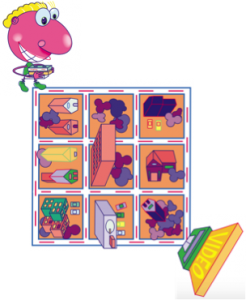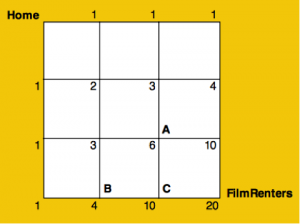Difficult situation: During my short practicum in a secondary school in Vancouver, I have noticed several students unwilling to participate in classroom activities. I was observing Calculus 12 classes taught by an experienced mathematics teacher. The textbook used for this course was published in 1989 and the assigned readings and homework exercises were from this textbook. It looked like the teacher was in total control of the way in which topics were discussed and the classroom discourse appeared to be orderly. Often times, the students who were reluctant to engage came into the classroom later than others and sat in the back of the class or near the door. These students were the last ones to walk in and the first ones to walk out of the classroom. They remained silent and seemed to be busy, whether productive or not, throughout the class and rarely interacted with their classmates or the teacher. In addition, these students were either fiddling around with their phones (texting and playing games) or watching Youtube video clips (muted) for the most part. It was not clear whether they have read the assigned readings or completed their homework exercises. What was clear was that these students never seemed to answer questions, offer opinions, or participate in group work, activities, or discussions.
Students’ reluctance to participate in classroom discourse can be addressed by knowing and accepting that students are learners. It was difficult for me to exactly know what led these students to behave the way they did in the Calculus 12 classroom. Imagining myself as a learner in these students’ shoes, I think that I have a better understanding of how learning environments play a major role in promoting students’ learning and wellbeing in the classrooms.
First, my approach to addressing or preventing this difficult situation would be finding ways to create and maintain an environment that is safe for every learner. I would have to think through various possibilities while diagnosing the problem. If classroom participation is an ongoing issue, I might start by having private conversations with these students to zero-in on what prompts them to behave the way they do. This conversation could expose whether the content is too repetitive, way beyond students’ current capacity to understand, loaded with too much new information, or unrelated to students’ interests. Perhaps, these conversations may or may not lead to improved attitude towards classroom participation. I think that one way to encourage students to participate in classroom activities would be to make classroom participation mandatory, one way or another, without further alienating these students.
Second, I would need to know whether students are ready for learning new concepts. This can be done in several ways. For instance, exit slips, reviews, and previews could be helpful to adjust future lesson plans. Beginning of lessons can also be devoted to reviewing homework or readings in pairs or small groups. Periodic pop quizzes, low-stakes exercises, or jigsaws at the beginning of the class, followed by full class discussions could provide opportunities for students to interact with each other or their friends to increase comfort and familiarity.
Third, I would attempt to identify alternative access points to the curriculum in order to increase engagement and success. This can be carried out through exercises, problems, or tasks that have low floor but high ceiling. In terms of mathematics, low floor high ceiling problems are types of problems that are easy to understand and visualize, but hard solving the problems. These types of problems are accessible to a wide range of ability levels and allow all learners to experience mathematical success. Content can also be presented with multiple representations. For example, the roots of quadratic equations can be found through algebraic, graphical, or tabular representations.
Last, I would have to develop and demonstrate the capacity to be aware of, control, and express my emotions, and to handle interpersonal relationships carefully and sensitively. This would mean taking personal responsibility to demonstrate the habits of a life long learner and keeping up with new insights from educational research.
In other words, I believe that knowing and understanding students as learners is a key to prevent or mitigate problematic situations in the first place.




